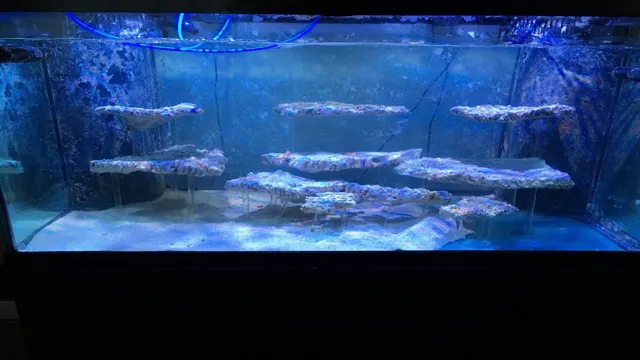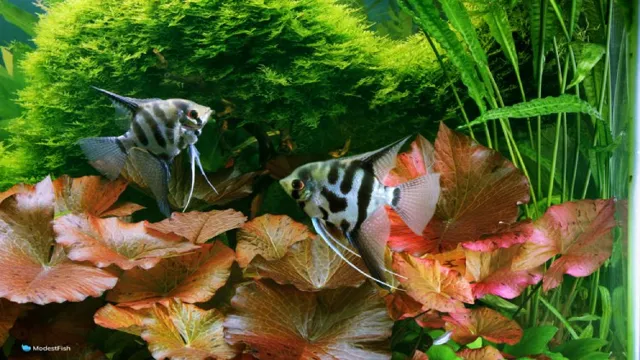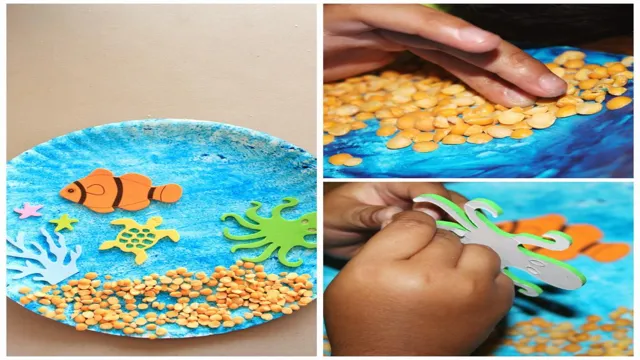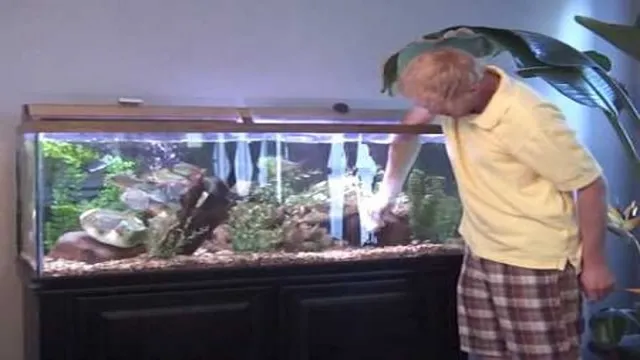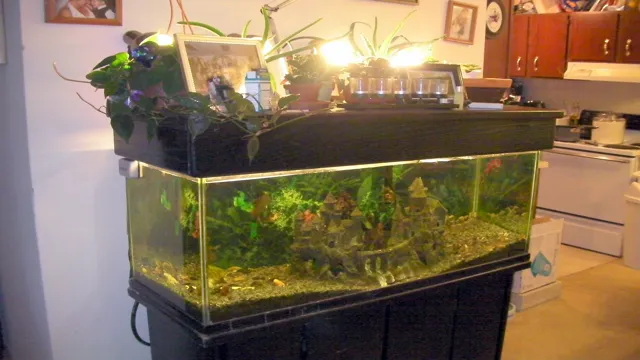Do you dream of a tranquil, lush oasis in your aquarium? Then creating a floating island could be just what you need! A floating island is a miniature ecosystem that is easy to maintain and adds a natural touch to your aquarium. Not only is it aesthetically pleasing, but it also provides hiding spots, spawning sites, and a shelter for fish. In this blog, we will guide you through creating your very own floating island and share some useful tips to ensure that it thrives in your aquarium.
So let’s dive in and create a serene and enchanting environment for your aquatic pets!
What You’ll Need
If you want to create a stunning aquarium that impresses your friends and makes your fish happy, you might be wondering how to make a floating island. Thankfully, it’s not as difficult as it might seem! First, you’ll need to gather a few supplies. You’ll need a piece of Styrofoam, a plastic plant pot, some aquarium-safe glue, and some aquarium-safe rocks.
The Styrofoam will form the base of your floating island, which is essentially a platform that floats on the surface of the water. The plastic pot will be turned upside down and attached to the Styrofoam with glue, forming a “hill” or peak that rises above the water. Finally, you’ll need to attach the aquarium-safe rocks to the outside of the Styrofoam platform using glue or another adhesive.
These rocks will provide additional weight to keep the island stable and prevent it from tipping over. Once you have all these supplies assembled, you’re ready to start building your floating island!
Aquarium-safe adhesive
If you’re setting up an aquarium, you need to make sure that you’re using aquarium-safe adhesive to attach any decorations or equipment to the glass. Using non-aquarium-safe adhesive can be harmful to any fish or plants living in the tank. So, what do you need? First, you’ll need to choose an adhesive that is safe for aquarium use.
Silicone sealant is a popular option as it is safe and effective. You’ll also need a caulking gun to apply the adhesive to the glass, as well as a scraper to ensure that the surfaces are clean and free of debris before you begin. It’s important to be patient and let the adhesive set fully before adding any water or fish to the tank.
With the right adhesive, your aquarium will be safe and secure for all its inhabitants.
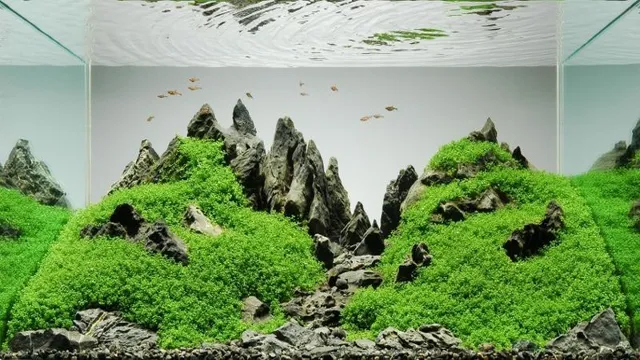
Styrofoam or other buoyant material
Styrofoam or other buoyant materials can come in handy when you’re planning a water-based project that requires flotation. These materials are lightweight and easy to work with, making them an ideal choice for DIY projects. To get started, you’ll need to gather a few basic supplies.
First, you’ll need either Styrofoam or another type of buoyant material, like cork or foam. You’ll also need a cutting tool, such as a knife or saw, to shape the material to fit your project’s specifications. It’s essential to remember that Styrofoam is not biodegradable, so you need to handle it with care and dispose of it properly.
When using Styrofoam or other buoyant materials, be sure to follow proper safety guidelines and take appropriate precautions to avoid injury. With just a little creativity and elbow grease, you can create all kinds of floats and flotation devices that will make your time in the water more enjoyable and safer.
Aquarium plants or moss
Aquarium plants and moss can enhance the look of your fish tank while also creating a more natural and healthy environment for your aquatic pets. When starting out, you’ll need to have a few things on hand. First and foremost, you’ll need to do some research to determine what type of plants and moss will best suit your aquarium and the types of fish you have.
You’ll also need adequate lighting and a nutrient-rich substrate to support plant growth. Tools such as scissors, tweezers, and planting tools will come in handy for planting and arranging plants and moss within your tank. Additionally, it’s important to properly clean and quarantine any new plants or moss before introducing them to your aquarium to prevent the spread of harmful bacteria or parasites. (See Also: How to Clear Cloudy Aquarium Water from Sand: Easy Tips and Tricks)
With the right preparations, you can easily add beautiful and beneficial aquatic foliage to your tank.
Decorative elements (rocks, shells, etc.)
If you’re looking to add some decorative elements to your aquarium, rocks and shells are a great option. Rocks can provide a natural look to the aquarium and can create hiding places for fish. Shells can also add a natural look and can create a fun environment for marine life to explore.
To get started, you’ll need to pick out the right type of rocks and shells that are suitable for aquarium use. Avoid using rocks that are porous or contain mineral deposits, as they can alter the pH levels of the water. Instead, opt for smooth river rocks or aquarium-safe rocks that won’t harm your fish.
For shells, make sure they are clean and free of any debris or harmful substances. Once you have your rocks and shells selected, rinse them thoroughly and arrange them in the aquarium as desired. Adding decorative elements to your aquarium can not only provide visual appeal but can also improve the overall health and happiness of your fish.
Building Your Island
If you’re looking for a new and exciting way to spruce up your aquarium, why not try building a floating island? It’s not as difficult as you may think! First, decide on the size and shape of your island. You can use a variety of materials, such as driftwood, rocks, or artificial decorations, to create the base. Next, use suction cups or fishing line to anchor the island to the side of the aquarium.
To make the island float, you’ll need to attach pieces of foam or cork to the bottom. Lastly, add some aquatic plants or moss to the island to give it a more natural look. Your fish will love exploring their new island and you’ll have a unique element to add to your aquarium.
So, why not give it a try and make your very own floating island?
Cutting Styrofoam to Size
When it comes to creating your own DIY island, cutting Styrofoam to size is an essential part of the process. Not only is Styrofoam lightweight and easy to work with, but it also saves you money compared to other materials like wood or stone. To get started, measure the dimensions of your island and mark them onto your Styrofoam block.
Then, use a knife or hot wire cutter to trim down the Styrofoam to the correct size. Be sure to wear gloves and eye protection, and take your time to ensure accuracy and precision. Don’t forget to smooth out any rough edges using sandpaper or a file, and once you’re happy with your cut, you’ll be ready to move on to the next step in your island-building process.
With a little patience and careful attention to detail, cutting Styrofoam to size can be a simple and stress-free step in bringing your island dreams to life.
Adding Plants and Decor
Building a beautiful island in Animal Crossing involves a lot of planning and creativity. Adding plants and decor to your island can enhance the game experience and create a unique atmosphere. Whether you opt for natural or artificial plants, incorporating greenery into your island can bring it to life.
Don’t be afraid to experiment with different types of flora and combinations to find the perfect plants for your vision. Adding decorative items such as lamps, vases, and paintings can also add personality and charm to your island. These items come in varying colors, styles, and themes to suit your taste. (See Also: How to Read Aquarium Thermometer: Your Complete Guide to Accurate Temperature Monitoring)
With a little time and effort, you can transform your island into a vibrant and welcoming paradise.
Attaching the Island to the Tank
Attaching the island to the tank is an essential step in building your aquarium island. This process involves securing the island to the bottom of the tank, ensuring that it stays in place and doesn’t float around. One method is to use aquarium-safe silicone adhesive to attach the island directly to the tank bottom.
Before doing this, it’s crucial to clean the bottom of the tank thoroughly, so the adhesive has a firm grip. Another option is to use suction cups or strong magnets to keep the island in place. Suction cups are best for small islands and lightweight islands, while magnets are better suited for larger and heavier islands.
It’s essential to choose high-quality suction cups or magnets that can withstand the weight of the island and not damage the glass of the tank. By securely attaching your island to the tank, you can ensure that it stays in place and provides a safe and comfortable habitat for your fish and other aquatic creatures.
Maintenance Tips
If you’re looking to add some natural beauty to your aquarium, why not try making a floating island? This unique feature not only looks great, but can also provide additional hiding spots and resting places for your fish. To start, you’ll need a piece of cork or styrofoam as the base for your island. Next, attach live plants to the surface to help clean the water and give your fish a natural environment.
To keep your floating island stable, attach a weight or anchor to the base. You can also add decorative elements such as rocks and driftwood to make your island more appealing. However, be sure to regularly maintain the plants and clean the base of the island to prevent any buildup of debris or algae.
With these simple tips, you can create a beautiful and functional addition to your aquarium.
Regular Cleaning
Regular cleaning is an essential aspect of maintaining a clean and healthy home. It’s important to create a cleaning schedule and follow it consistently. Start by decluttering your space to make cleaning easier and more efficient.
Dust and vacuum your living areas at least once per week and make sure to clean bathrooms and kitchens regularly. Don’t forget to clean frequently touched surfaces, such as door handles and light switches. Regular cleaning not only keeps your home looking tidy, but it also helps prevent the buildup of harmful bacteria and allergens.
Set aside specific days of the week for particular tasks to ensure that everything gets done. By keeping up with regular cleaning, your home will stay comfortable, inviting, and healthy for you and your family.
Trimming Plants
Trimming plants can be an essential part of your garden and yard maintenance routine, and doing it correctly can significantly impact the health and growth of your plants. One tip to remember is to always use sharp and clean pruning shears to avoid damaging the plant tissues and encouraging the spread of diseases. When trimming for maintenance reasons, focus on removing dead or diseased branches, crossing stems or limbs, and any overgrowth that can clutter the plant or prevent its proper air and light circulation.
This will not only keep your plants looking neat and healthy but will also encourage new growth and blossoming. Remember to trim regularly and only remove one-third of the plant’s foliage at a time to prevent overpruning and shock to the plant. With proper trimming techniques and consistent care, your plants will thrive and bring beauty to your garden. (See Also: How to Lower Nitrites and Alkalinity in a Small Aquarium: Top Strategies for Optimal Water Quality)
Conclusion
In conclusion, creating a floating island in your aquarium is no longer a pipe dream. With the right materials and a little bit of creativity, you can bring a touch of magic to your underwater paradise. Just remember to keep the environment balanced and the water clean, so your floating island can thrive for years to come.
So, what are you waiting for? Dive in and let your imagination take flight, because nothing is impossible when it comes to aquarium design!”
FAQs
What materials do I need to make a floating island in an aquarium?
To make a floating island in an aquarium, you will need a styrofoam block, some aquarium-safe glue, rocks or gravel, and aquatic plants.
How do I attach the styrofoam block to the bottom of the aquarium?
To attach the styrofoam block to the bottom of the aquarium, use suction cups or fishing line to hold it in place.
How do I shape the styrofoam block into an island shape?
Use a serrated knife or foam cutter to shape the styrofoam block into the desired island shape.
What types of aquatic plants are suitable for a floating island in an aquarium?
Any species of floating plants or plants with long roots that can be anchored to the island are suitable for a floating island in an aquarium. This can include water lettuce, water hyacinth, duckweed, and Java moss.
How do I prevent the island from tipping over?
Make sure the styrofoam block is evenly distributed and attached securely to the bottom of the aquarium. You can also attach small weights to the bottom of the island to keep it stable.
How often do I need to maintain the floating island?
You should maintain the floating island regularly by trimming any overgrown plants and removing any dead or decaying plant matter.
Can I add fish to a tank with a floating island?
Yes, you can add fish to a tank with a floating island as long as the fish are compatible with the plants and other tank inhabitants.

